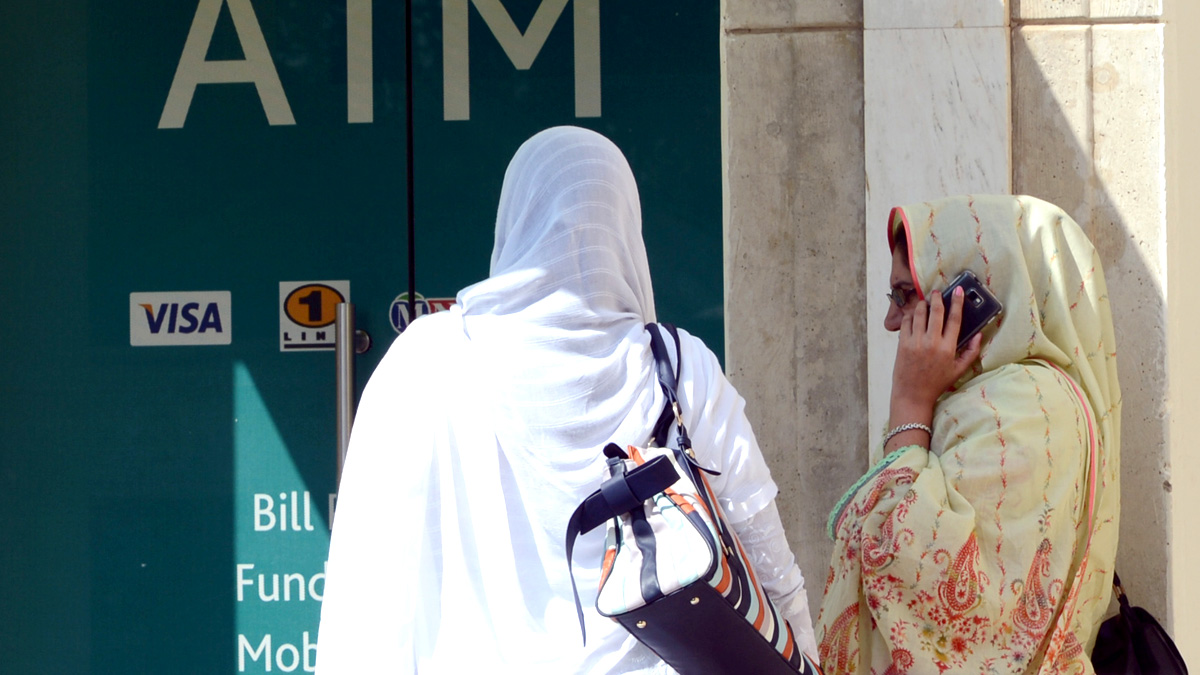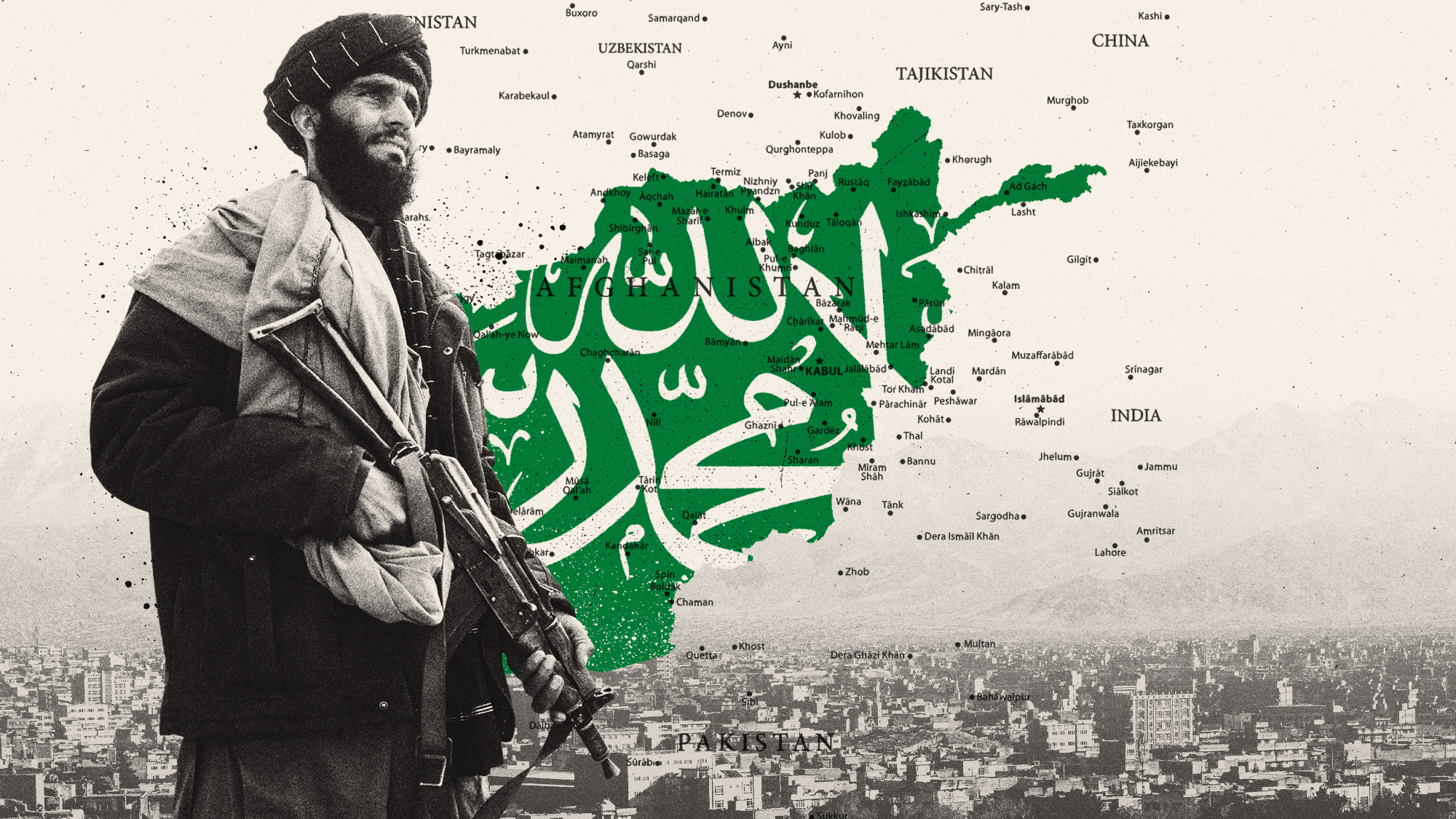How anti-corruption measures are shutting women out of banks
Barriers to opening accounts may be 'unnecessarily high' for women in developing countries

By Louis de Koker and Jeanne Nel de Koker, from Deakin University
Around the world, women in developing economies enjoy less access to the banking system than men.
Bank account opening procedures, especially requirements to produce identity documents, are a major barrier for undocumented women in developing countries. These requirements are mainly aimed at meeting anti-money laundering and counter terrorist financing (AML/CTF) obligations. But the barriers may be set unnecessarily high for women given their crime risk profile.
The Week
Escape your echo chamber. Get the facts behind the news, plus analysis from multiple perspectives.

Sign up for The Week's Free Newsletters
From our morning news briefing to a weekly Good News Newsletter, get the best of The Week delivered directly to your inbox.
From our morning news briefing to a weekly Good News Newsletter, get the best of The Week delivered directly to your inbox.
Economic well-being and development is supported by access to formal financial services to save money securely, facilitate the receipt of money sent by family members, insure possessions and responsibly access credit for small business. Yet 38% of adults worldwide – nearly two billion people - still do not have a formal bank account. This exclusion weighs more heavily on women.
Globally 1.1 billion women (55% of unbanked adults) are financially excluded. The gender gap is particularly big in South Asia where only 37% of women have an account compared to 55% of men.
Women face financial, literacy, geographic and social barriers when they wish to open a bank account. It is an onerous process that requires applicants to produce identity verification documents. Women in developing countries often enjoy less access than men to identity documents. Identity document gender gaps have, for instance, been documented in South America, Africa as well as in Middle Eastern and South Asian countries.
Countries like India and Nigeria have introduced innovative large-scale national identity programmes. These programmes are important, but national identification systems don’t necessarily ensure equal coverage for women. In Pakistan, for example, women are significantly less likely (79%) to have a national identity card than men (90%).
A free daily email with the biggest news stories of the day – and the best features from TheWeek.com
Without the required documents, women can’t open a bank account. There is, however, no clear reason why these identification barriers should be set so high for women.
The real risk
Banks' customer identification practices are heavily determined by national AML/CTF regulations. These in turn reflect international standards set by the Financial Action Task Force (FATF) and the Basel Committee on Banking Supervision.
AML/CTF laws require banks to apply robust customer identification and verification measures to prevent anonymous accounts and identity fraud. Where clients pose a higher crime risk, banks must enhance their due diligence measures, require more information and apply more stringent verification.
New, proportional, risk-based standards adopted by the FATF in 2012 enable countries to allow banks to simplify identification measures where crime risks are lower. For such lower risk clients, banks may dispense with verification of residential addresses where that is a standard requirement. They may also accept a letter from a community leader verifying a person’s particulars, rather than insisting on viewing a state-issued document.
Could women be classified as a group of customers that pose a lower crime risk? Compelling statistics suggest so.
Criminality: the gender gap
Criminal justice statistics reflect a distinct criminality gender gap. The International Centre for Prison Studies collects statistics on women in prison. They report that women comprise only 1.5% of prisoners in Pakistan, 2% in Nigeria, 5.1% in Indonesia and 5.3% in Kenya. In fact, the percentage of women in prison is in single digits in nearly 95% of countries globally. Arrest and prosecution rates of women are also significantly lower. Women feature more prominently in only a few types of offences - prostitution, shoplifting, embezzlement and welfare and credit card fraud.
Criminologists are very aware of this gap. A significant body of research focuses on possible explanations for the gap (for example that bias in the criminal justice system may explain a part of the gap), whether or not the gap is narrowing and the few types of offences where the gender gap is small, absent or where women may be in the majority. While the academic analysis and debate continue, the available statistics support the contention that women pose a lesser crime risk than men and that this risk is often significantly lower.
Why do bank practices not reflect this fact? Probably because AML/CTF risk assessments, both at a country and a financial institution level, are on average still relatively crude and because banks may be concerned that a gendered view of clients may be discriminatory.
Improving the system
AML/CTF assessments are generally quite basic. They are often informed by a simplistic understanding of money laundering and terrorist financing risk, reflecting mainly anecdotal evidence blended with a measure of common sense. Granular criminal justice statistics, where available, may be considered at a national level but are often not considered by banks in their risk assessments. Banks often lump clients together to avoid accusations of unfair discrimination.
Clients are generally clustered in broad groups such as nationals and foreigners or individuals and corporates, and risk assessments focus mainly on risks arising from the types of products and services such groups may use.
Non-discrimination, however, not only requires the like treatment of those who are alike but also the unlike treatment of those who differ. While gender will generally be an irrelevant consideration for banks, client risk assessments require a consideration of similarities and differences among clients.
Crime patterns differ from country to country and region to region. In some cases women may pose the same or even a higher money laundering or terrorist financing risk to banks. What is required is a reasonable and honest assessment of the available facts and statistics. There is however little evidence that regulators and banks are considering gender-related crime statistics. Ignoring such statistics may unfairly undermine women’s financial inclusion.
Louis de Koker is Professor of Law at Deakin University and Jeanne Nel de Koker is Education and Development Coordinator, Centre for Rural Regional Law and Justice at Deakin University
This article was originally published on The Conversation under the headline 'With increased anti-money laundering measures, banks are shutting out women'. Read the original article.
-
 The UK’s best Christmas pantos
The UK’s best Christmas pantosThe Week Recommends Dive into the festive cheer, even into the new year, with some traditional favourites and modern twists
-
 The longevity economy is booming as people live longer
The longevity economy is booming as people live longerThe Explainer The sector is projected to reach $27 trillion by 2030
-
 Codeword: December 11, 2025
Codeword: December 11, 2025The daily codeword puzzle from The Week
-
 Normalising relations with the Taliban in Afghanistan
Normalising relations with the Taliban in AfghanistanThe Explainer The regime is coming in from the diplomatic cold, as countries lose hope of armed opposition and seek cooperation on counterterrorism, counter-narcotics and deportation of immigrants
-
 Pakistan: Trump’s ‘favourite field marshal’ takes charge
Pakistan: Trump’s ‘favourite field marshal’ takes chargeIn the Spotlight Asim Munir’s control over all three branches of Pakistan’s military gives him ‘sweeping powers’ – and almost unlimited freedom to use them
-
 Femicide: Italy’s newest crime
Femicide: Italy’s newest crimeThe Explainer Landmark law to criminalise murder of a woman as an ‘act of hatred’ or ‘subjugation’ but critics say Italy is still deeply patriarchal
-
 Brazil’s Bolsonaro behind bars after appeals run out
Brazil’s Bolsonaro behind bars after appeals run outSpeed Read He will serve 27 years in prison
-
 Americans traveling abroad face renewed criticism in the Trump era
Americans traveling abroad face renewed criticism in the Trump eraThe Explainer Some of Trump’s behavior has Americans being questioned
-
 Nigeria confused by Trump invasion threat
Nigeria confused by Trump invasion threatSpeed Read Trump has claimed the country is persecuting Christians
-
 Sanae Takaichi: Japan’s Iron Lady set to be the country’s first woman prime minister
Sanae Takaichi: Japan’s Iron Lady set to be the country’s first woman prime ministerIn the Spotlight Takaichi is a member of Japan’s conservative, nationalist Liberal Democratic Party
-
 Russia is ‘helping China’ prepare for an invasion of Taiwan
Russia is ‘helping China’ prepare for an invasion of TaiwanIn the Spotlight Russia is reportedly allowing China access to military training